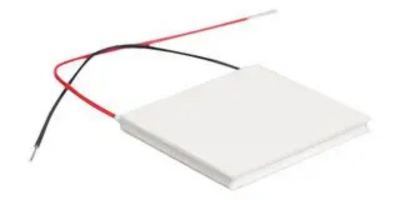In today’s rapidly evolving world of electronics, efficient and compact cooling solutions are more important than ever. One innovative technology that’s increasingly gaining attention is the Peltier module. Whether you’re a DIY electronics enthusiast, a thermal management engineer, or someone exploring alternative cooling systems, understanding this component can help unlock new design possibilities and energy-efficient solutions.
What Is a Peltier Module?
A Peltier module, also known as a thermoelectric cooler (TEC), is a solid-state active heat pump that transfers heat from one side of the device to the other using electrical energy. Unlike traditional cooling systems that rely on refrigerants and compressors, Peltier modules use the Peltier effect — a phenomenon where an electric current drives heat transfer between two different types of conductors.
This module typically consists of many small thermocouples arranged between ceramic plates. When DC voltage is applied, one side of the module becomes hot while the other side becomes cold. The result? A compact, silent, and vibration-free cooling solution.
How Does It Work?
The working principle is based on the Peltier effect, discovered by Jean Charles Athanase Peltier in 1834. When electric current flows through the junction of two different conductors, heat is either absorbed or released. In a Peltier module, this effect is harnessed across dozens or even hundreds of tiny semiconductor junctions.
Once power is supplied, electrons move through the semiconductor materials. As they move, they absorb energy (heat) on one side and release it on the opposite side. That’s why Peltier modules are capable of both cooling and heating — simply by reversing the polarity of the current.
Applications of Peltier Modules
Peltier modules are used in a variety of industries and consumer devices. Their ability to provide precise temperature control in a small package makes them ideal for:
- Portable coolers and mini fridges
- CPU and GPU cooling systems
- Laser diodes and sensors
- Medical devices and lab equipment
- Thermal cameras and night-vision optics
They’re also popular in DIY electronics projects and prototypes where noise, size, or mechanical complexity are concerns.
Advantages and Limitations
Peltier modules offer several benefits that set them apart from conventional cooling systems:
- Compact Size: Perfect for tight spaces where bulky fans or refrigerant coils won’t fit
- No Moving Parts: Silent operation and higher reliability
- Environmentally Friendly: No need for harmful refrigerants
- Precise Control: Temperature can be adjusted simply by changing the voltage or current
However, they’re not without drawbacks. Peltier modules can be relatively inefficient compared to traditional refrigeration methods. They tend to consume more power and generate significant waste heat on the hot side, which must be effectively dissipated to maintain optimal performance.
Key Considerations Before Using a Peltier Module
Before integrating a Peltier module into your design, you should evaluate:
- Power Supply: Ensure your power source can handle the module’s voltage and current requirements
- Heat Dissipation: Use a good heatsink and fan on the hot side to prevent overheating
- Temperature Control: Pair with sensors and controllers for precise thermal management
- Application Fit: Understand whether your use case requires quick cooling, long-term thermal stability, or minimal energy use
For those new to this tech, pre-assembled cooling kits are widely available and make experimenting easier without needing to understand every technical detail.
Final Thoughts
The Peltier module is a brilliant example of how thermoelectric technology is reshaping the way we manage heat in modern systems. Its ability to quietly and efficiently cool small devices has opened doors in fields ranging from personal gadgets to scientific instruments.



